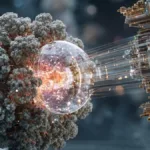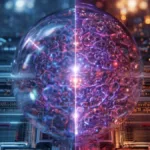Chicago (IL) – The Jet Propulsion Laboratory (JPL) has confirmed the successful launch of the European Herschel and Planck spacecraft.
“The European Space Agency missions, with significant participation from NASA, hitched a ride together on an Ariane 5 rocket, but now have different journeys before them,” the JPL explained in a statement. “Herschel will explore, with unprecedented clarity, the earliest stages of star and galaxy birth in the universe; it will help answer the question of how our sun and Milky Way galaxy came to be. Planck will look back to almost the beginning of time itself, gathering new details to help explain how our universe came to be.”
Herschel separated from its Ariane 5 rocket 26 minutes after launch, followed by Planck two minutes later. The spacecraft are currently traveling on separate trajectories to a location in the Earth-sun system known as the second Lagrangian point, which is approximately 1.5 million kilometers (930,000 miles) from Earth. The two space telescopes will spend the rest of their missions independently orbiting this point – as they make their way around the sun every year.
According to the JPL, Herschel is designed to detect light, or wavelengths in the infrared and submillimeter range. The spacecraft will also analyze “the cold and dark wombs where the embryos of stars and galaxies have just begun to grow.” In addition, Herschel is expected to detect key elements and molecules involved in the life of a star – from atoms to potentially life-forming materials, such as water.
“Using Herschel is like opening a dirty window and getting a clear view of stars and galaxies,” said Paul Goldsmith, the NASA Herschel project scientist at JPL.
In contrast, Planck will observe longer wavelength light, from the submillimeter to microwave range. It will operate much like a time capsule, to study light that has traveled billions of years from the newborn universe to reach the Earth-sun system. This light, known as cosmic microwave background, contains information about the Big Bang that created space and time itself.
“Our previous images of the baby universe were like fuzzy snapshots – now we’ll have the cleanest, deepest and sharpest images ever made of the early universe,” added Charles Lawrence, the NASA Planck project scientist at JPL.






